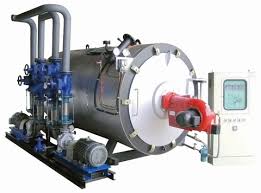
Août . 13, 2024 14:32 Back to list
Schematic Representation of a Gas-Fired Hot Water Boiler System for Efficient Heating Solutions
Understanding the Gas-Fired Hot Water Boiler A Comprehensive Overview
Gas-fired hot water boilers are crucial components in residential and commercial heating systems, providing efficient heat for water heating and space heating. These systems employ the combustion of natural gas or propane to produce hot water that can be circulated through pipes for various applications, including heating domestic water, radiators, and underfloor heating systems. Understanding the basic diagram and working principles of these boilers is essential for efficient operation and maintenance.
The Basic Components of a Gas-Fired Hot Water Boiler
A standard gas-fired hot water boiler consists of several key components. At its core, the boiler is made up of a combustion chamber, where gas is burned to generate heat. The combustion process typically involves a burner that mixes gas with air and ignites it. The resulting flames heat the water in the boiler’s heat exchanger, which is often made of copper or stainless steel for effective thermal conductivity.
The schematic diagram of a gas-fired hot water boiler usually includes the following elements
1. Burner This is where gas is introduced and ignited. The burner creates a flame that heats the water in the heat exchanger.
2. Heat Exchanger A critical part of the boiler, the heat exchanger transfers heat from the combustion gases to the water. This component usually has a series of tubes or coils to maximize surface area and enhance heat transfer efficiency.
3. Circulating Pump Once heated, the water must be circulated throughout the system. The circulating pump moves the hot water through the pipes to various fixtures and heating units.
4. Thermostat This device monitors the temperature of the water and regulates the burner’s operation. When the water reaches the desired temperature, the thermostat signals the burner to shut off, maintaining the temperature within an efficient range.
5. Expansion Tank As water heats up, it expands. The expansion tank absorbs excess pressure from the expanding water, preventing potential damage to the system and ensuring safe operation.
gas fired hot water boiler diagram

6. Pressure Relief Valve This safety feature releases excess pressure from the boiler to prevent dangerous situations, ensuring the system operates safely.
The Working Principle
The working principle of a gas-fired hot water boiler is primarily based on the laws of thermodynamics. When the thermostat detects that the water temperature has dropped below a preset level, it signals the burner to ignite. Natural gas flows to the burner, mixing with air to create a flame. This flame heats the water in the heat exchanger, raising its temperature.
As hot water is drawn off, the circulating pump draws water from the lower part of the tank, creating a continuous flow that allows for constant heating and delivery. Once the water reaches the desired temperature, the thermostat will turn off the burner, ensuring energy efficiency.
Advantages of Gas-Fired Hot Water Boilers
Gas-fired hot water boilers offer several advantages. They are efficient, providing rapid heating and a steady supply of hot water. Modern models can achieve efficiency ratings of over 90%, reducing energy costs significantly compared to older models. Additionally, natural gas is often less expensive than electricity, leading to lower operational costs.
Another benefit is their environmentally friendly operation. Natural gas produces fewer greenhouse gas emissions than other fossil fuels, making it a more sustainable choice for heating.
Conclusion
Gas-fired hot water boilers are essential for effective heating solutions in various settings. Understanding the key components and the operating principles can aid in better maintenance and optimization of these systems. By recognizing their advantages, homeowners and businesses can make informed choices, ensuring comfort while being conscious of energy efficiency and environmental impact. As technology continues to advance, gas-fired hot water boilers are poised to play an even more significant role in heating solutions in the future.
-
Best Steam Boiler Design PDF Free Design Calculation & Diagram Downloads
NewsJun.10,2025
-
Hot Boiler Water Heater Efficient Heating Solutions for Home & Commercial Use
NewsJun.10,2025
-
Steam Boiler Safety Devices High-Quality Protection Valves
NewsJun.10,2025
-
Ultimate Steam Boiler Checklist for Safety & Efficiency
NewsJun.10,2025
-
Optimal Hot Water Boiler Temperature Setting Guide
NewsJun.10,2025
-
Effective Hot Water Boiler Chemical Treatment Protect & Maintain
NewsJun.09,2025
Related PRODUCTS






















